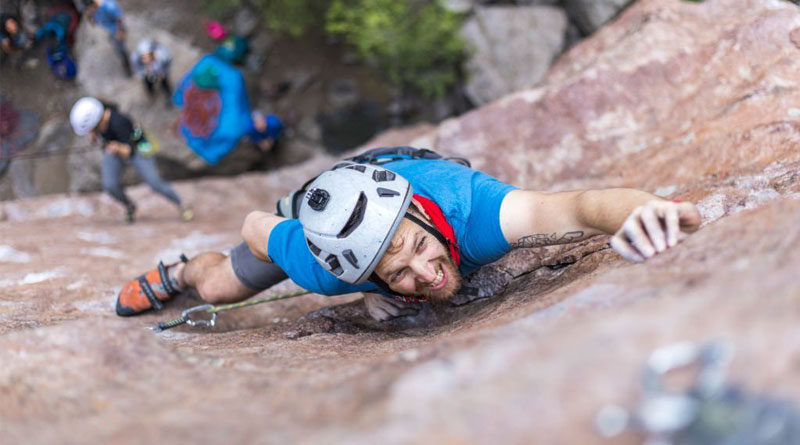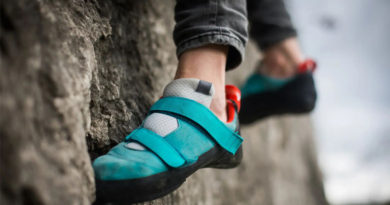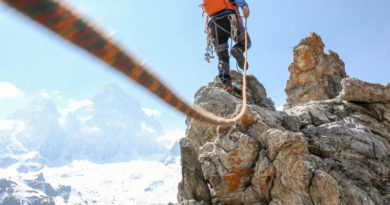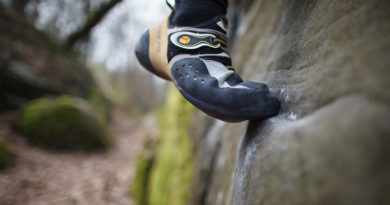Bouldering vs. Sport Climbing: The Difference
Climbing enthusiasts have a plethora of options to choose from, with different types of climbing disciplines, each offering a unique experience. Two of the most popular types of climbing are bouldering and sport climbing. While both require strength, endurance, and a good head for heights, they differ in terms of technique, equipment, and duration. Understanding the differences between these two disciplines is essential for climbers to choose the type of climbing that suits their style and preferences.
In this blog post, we will delve into the world of bouldering and sport climbing, discuss their characteristics, advantages and disadvantages, and explore the differences between the two. By the end of this post, you’ll be able to make an informed decision about which type of climbing to pursue.
Bouldering
Bouldering is a type of climbing that involves short, challenging routes that are usually no more than 20 feet tall. Unlike sport climbing, which requires climbers to ascend longer routes with the help of ropes and harnesses, bouldering is done without any ropes or harnesses. Instead, climbers use crash pads to cushion their falls.
Types of bouldering problems and their grading system
One of the defining characteristics of bouldering is the focus on problem-solving. Bouldering routes, known as “problems,” are short, intense, and require a combination of technique, strength, and balance to complete. Climbers are presented with a series of moves that require creative thinking to figure out the best way to get to the top.
Bouldering problems are graded based on their difficulty level. The grading system varies from country to country but generally ranges from V0 (the easiest) to V17 (the most difficult). Climbers can progress through the grades as they improve their skills and strength.
Techniques and equipment used in bouldering
Bouldering also requires specific techniques and equipment. Climbers often use specialized shoes with sticky rubber soles to provide better traction on the rock. They also use chalk to dry their hands and improve their grip. Bouldering gyms usually have a variety of holds and surfaces to mimic outdoor rock, allowing climbers to practice their techniques in a safe and controlled environment.
Advantages and disadvantages
One advantage of bouldering is that it can be done with minimal equipment and in a shorter amount of time compared to sport climbing. It’s also a great way to improve strength and technique, making it a popular training method for climbers of all levels. However, one of the disadvantages of bouldering is the risk of injury due to falls, even with the use of crash pads. Climbers must be aware of their limits and practice proper safety measures to prevent accidents.
Sport Climbing
Sport climbing is a type of climbing that involves ascending longer routes with the help of ropes and harnesses. Unlike bouldering, which focuses on short, intense problems, sport climbing routes can be as long as 100 feet or more. Climbers use bolts that are drilled into the rock to protect them in case of a fall, and a partner on the ground helps to manage the rope and keep them safe.
Types of sport climbing routes and their grading system
Sport climbing routes come in different types, including vertical, overhanging, and slab. Each type of route requires different techniques and strengths. Vertical routes require good footwork and balance, while overhanging routes require upper-body strength and power. Slab routes require delicate footwork and precise body positioning.
Sport climbing routes are graded based on their difficulty level, using the Yosemite Decimal System (YDS) in the United States and other countries. The grading system typically ranges from 5.5 (the easiest) to 5.15 (the most difficult). Grades take into account the overall difficulty of the route, including the steepness of the rock, the size of the holds, and the length of the climb.
Techniques and equipment used in sport climbing
Sport climbers use specialized equipment, including ropes, harnesses, and carabiners, to protect themselves on the climb. There are different techniques used in sport climbing, including top-roping, lead climbing, and belaying. Top-roping is where the rope is anchored at the top of the climb and the climber is attached to the other end of the rope. Lead climbing is where the climber attaches the rope to the bolts as they climb, and the belayer takes in slack rope from below.
Advantages and disadvantages
Sport climbing offers many benefits, including improved endurance, mental focus, and the opportunity to climb longer routes. It also provides the opportunity to climb in a variety of outdoor environments, such as mountains, canyons, and cliffs. However, sport climbing also carries risks and potential for serious injury if proper safety measures are not taken. Climbers must be aware of their limits, practice proper safety techniques, and use appropriate equipment to stay safe on the climb.
Which one should you choose?
The final decision between bouldering and sport climbing is based on your personal preferences, goals, and physical abilities. Bouldering may be a better fit for you if you enjoy shorter, more powerful climbs that require a lot of upper-body strength and technique. Sport climbing, on the other hand, maybe a better choice if you enjoy longer climbs that require more endurance and technique, and don’t mind carrying more gear.
Consider your physical abilities and limitations as well. Bouldering may put more strain on your fingers and upper body, whereas sport climbing requires more endurance and can be physically demanding on all levels. It is critical to select a climbing style that corresponds to your fitness level, as pushing yourself too hard too quickly can result in injury.
Finally, you can experiment with both styles to see which one you prefer. Many climbers enjoy both bouldering and sport climbing, and they alternate between the two depending on their mood and objectives. Whatever you choose, start with proper instruction and follow safety protocols to ensure a fun and injury-free experience.
Conclusion
To conclude, bouldering and sport climbing are two popular and exciting types of rock climbing that each offer their own set of challenges and rewards. While they have some similarities, such as the use of climbing shoes and chalk, they have significant differences in terms of route height, equipment, techniques, and difficulty ratings.
Bouldering is typically shorter, more powerful, and requires less equipment, whereas sport climbing is longer, requires more endurance, and requires more equipment. Both sports necessitate strength, technique, and mental focus, but the skill set required for each is distinct.
The decision between bouldering and sport climbing is influenced by personal preferences, goals, and physical abilities. To ensure an enjoyable and injury-free experience, it is critical to begin with proper instruction, follow safety protocols, and select a climbing style that matches your fitness level.
Whichever style of climbing you choose, it offers an excellent opportunity to challenge yourself physically and mentally while enjoying the beauty and excitement of climbing on real rock.




